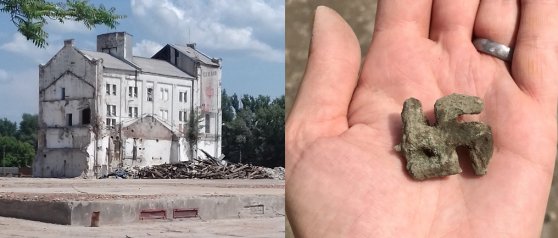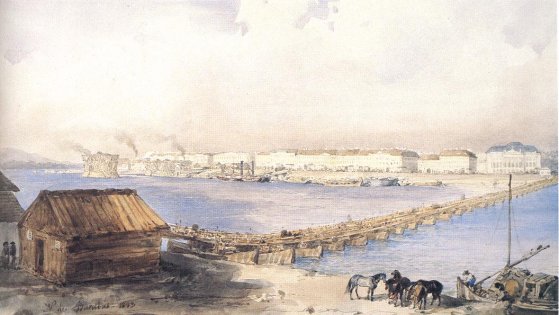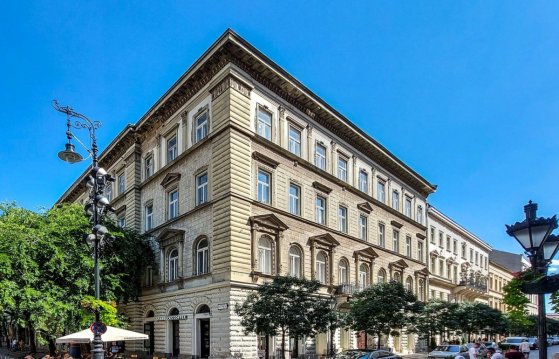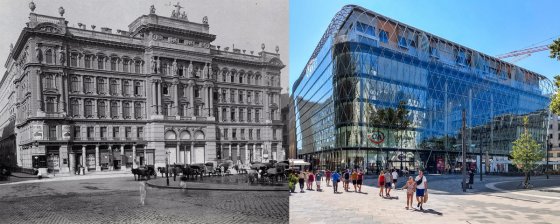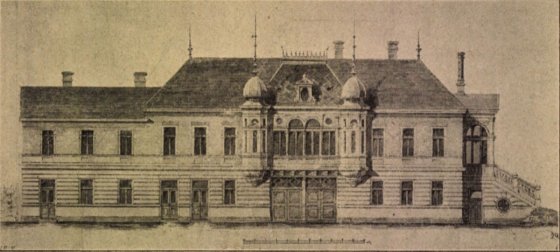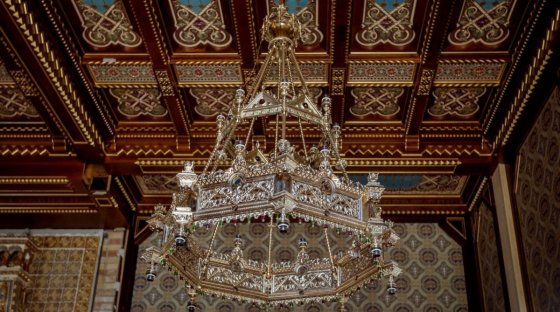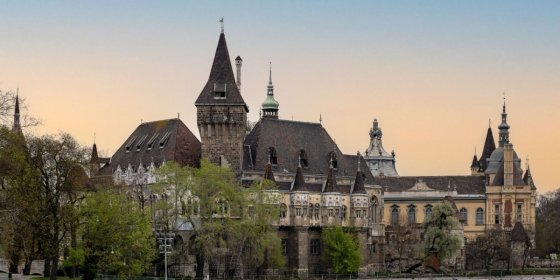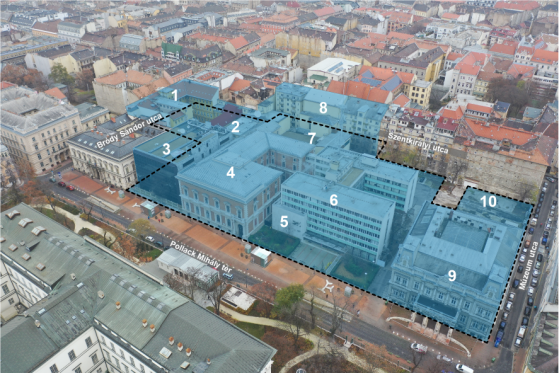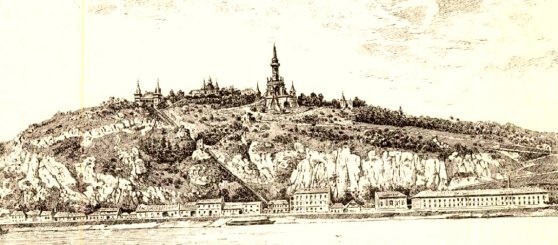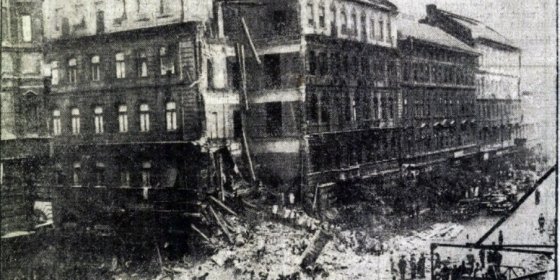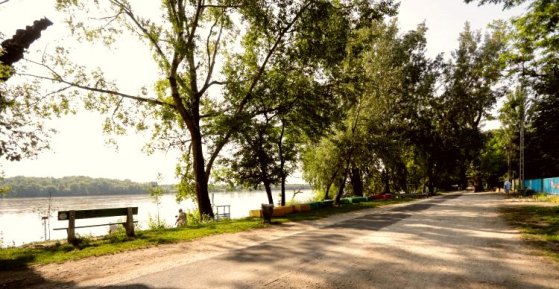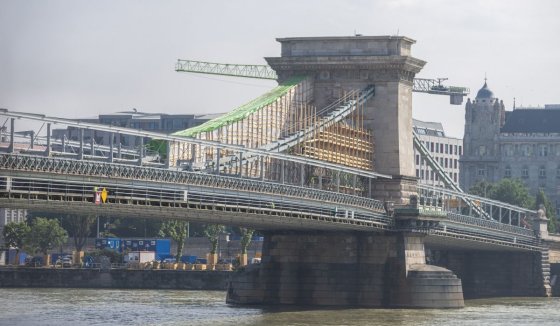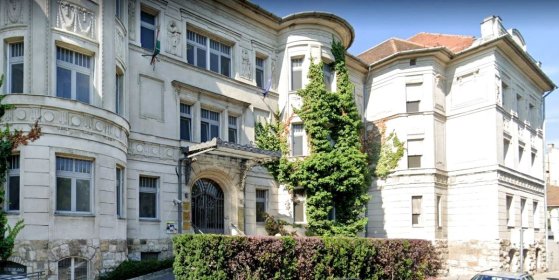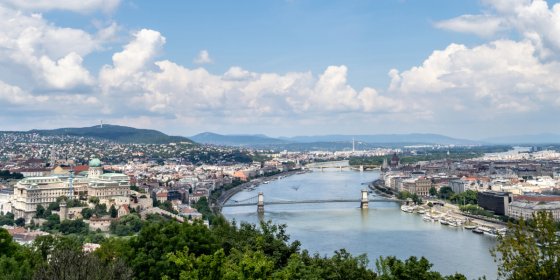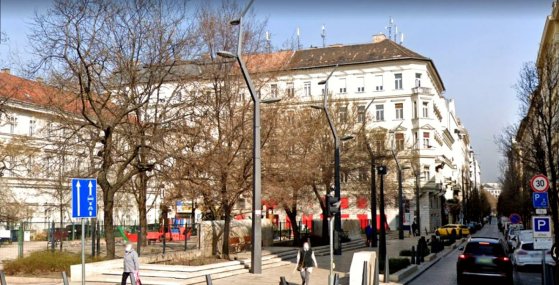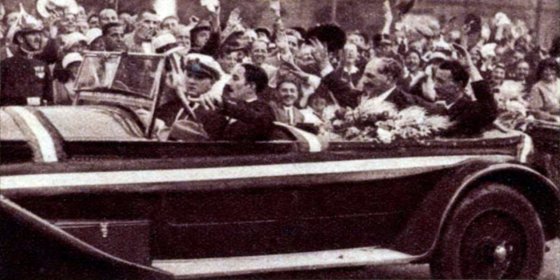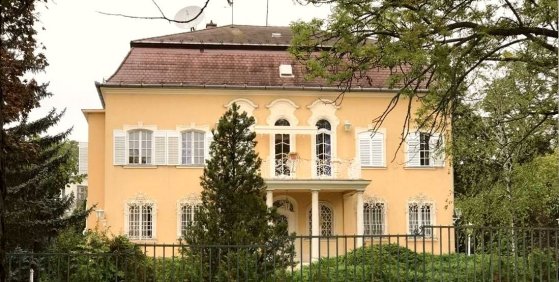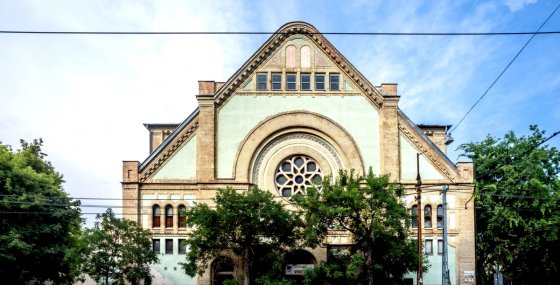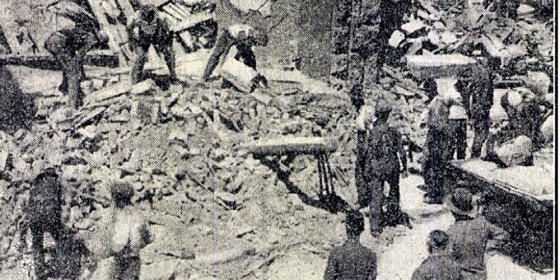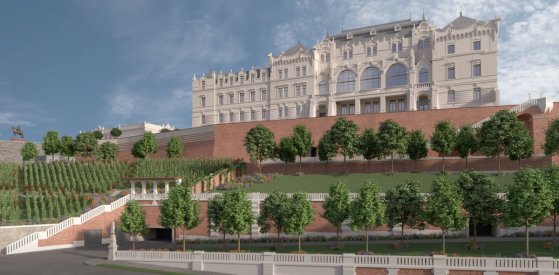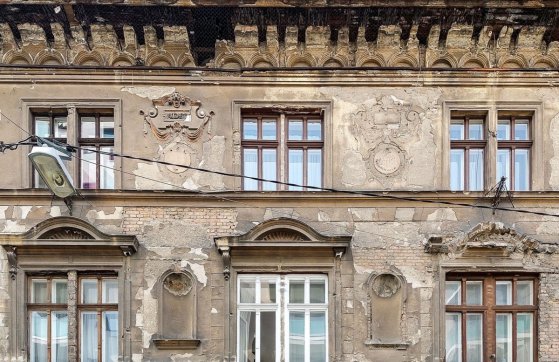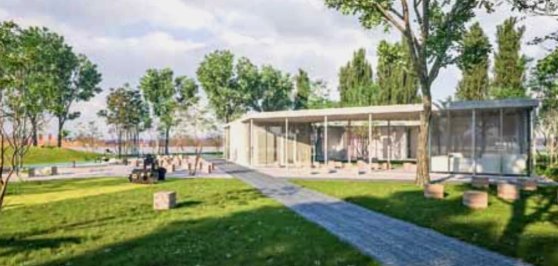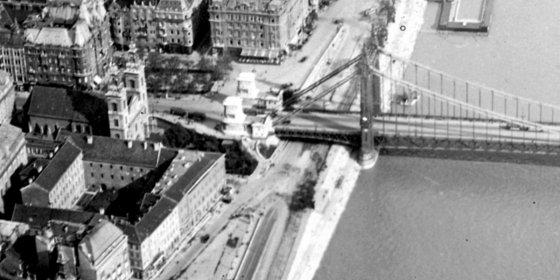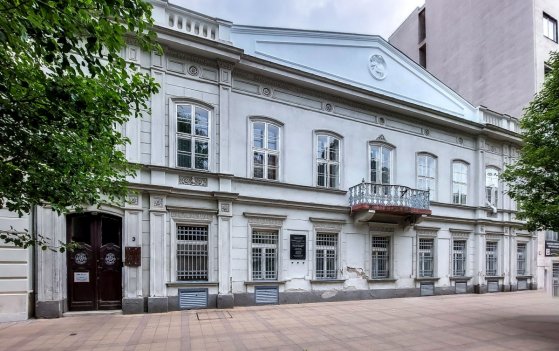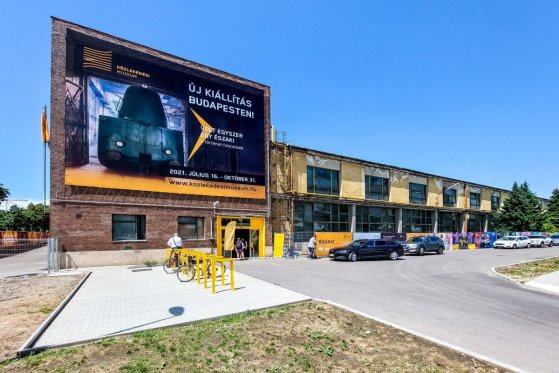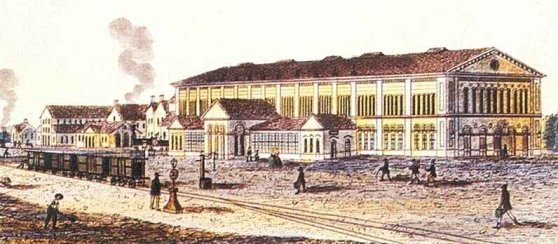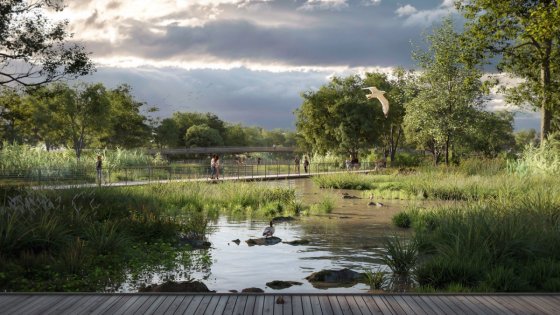 The „intertwined history” of the bridges and the city of Budapest
Which ideas and events have shaped the fate of bridges of Budapest and the cityscape? Alongside many other interesting facts, this question is also answered this newly published book by the Budapest City Archives, which introduces the history of bridges in Budapest.
The „intertwined history” of the bridges and the city of Budapest
Which ideas and events have shaped the fate of bridges of Budapest and the cityscape? Alongside many other interesting facts, this question is also answered this newly published book by the Budapest City Archives, which introduces the history of bridges in Budapest.
PestBuda
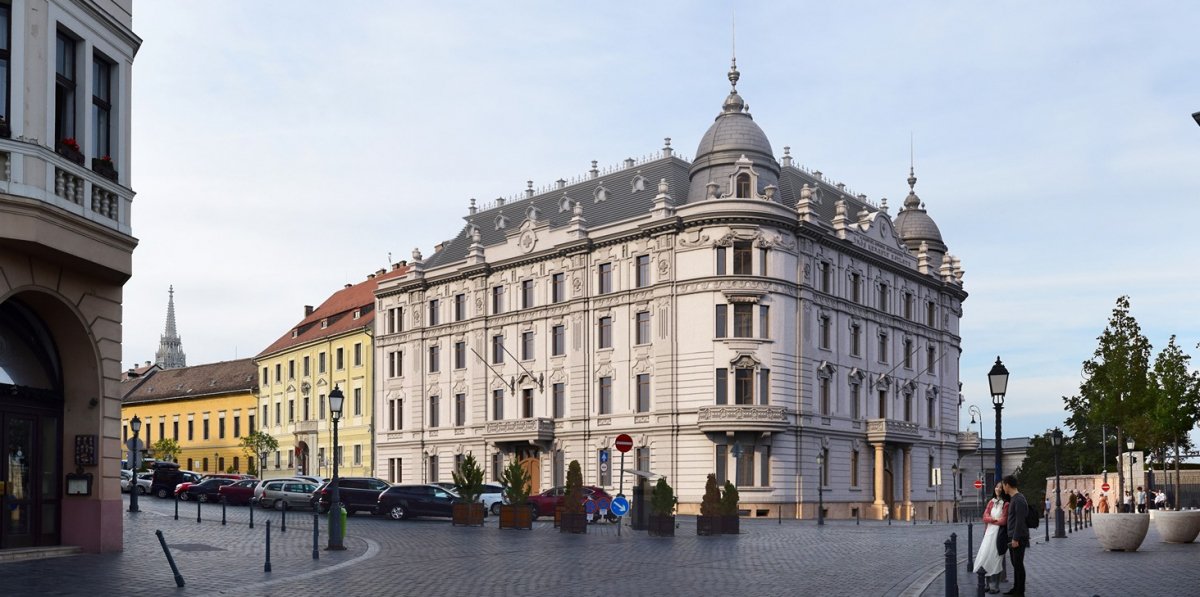 Reconstruction of the former Red Cross headquarters begins in Buda Castle
Reconstruction of the former Red Cross headquarters begins in Buda Castle
August 4, 2021 at 10:00 AM
During the reconstruction of the building, which was built for the Red Cross Society and then housed the Ministry of Foreign Affairs and was demolished after the Second World War, it will faithfully follow the original corner dome in its outer features. However, the interior of the building will house modern technology. The partial renovation of the neighbouring Batthyány Palace is also being carried out.
An ancient swastika was found on the grounds of Buszesz
August 3, 2021 at 5:00 PM
The excavation work has entered a new stage in the area of the former distillery in Óbuda, the archaeologists of the Budapest History Museum found Roman coins, a crescent-shaped military mounting made of bronze, and a bronze clothespin depicting a swastika.
Life before the Chain Bridge
August 2, 2021 at 9:00 AM
The pontoon bridge between Pest and Buda was built due to the visit of Archduke Albert Casimir and was closed, with a little exaggeration, due to the trip of Count István Széchenyi. The pontoon bridge between the two banks of the Danube was built 255 years ago and was demolished 171 years ago.
The first horse-drawn railway of Pest started 155 years ago
August 1, 2021 at 9:30 AM
On 1 August 1866, the regular services of the city horse-drawn railway started in Pest. The first route led from today's Kálvin Square to Újpest, the journey time was 35 minutes. The new means of transport advocated by Count Sándor Károlyi was successful, and the horse-drawn railway contributed significantly to the development of Újpest. A few years after the handover of the first track, Pest and Buda were almost enmeshed by horse-drawn railway tracks.
The Neo-Renaissance facade hides a classicist interior in Hercegprímás Street, Lipótváros
July 31, 2021 at 10:00 AM
The house, built in 1844 in the classicist style by Hild József, remodelled in the neo-Renaissance style at the beginning of the 20th century, is now one of the most beautiful buildings in the square surrounding St. Stephen's Basilica at 7 Hercegprímás Street. The facade itself is special with the decorations alternating from floor to floor, and the cosy inner courtyard has retained its classicist touches. What overshadows the history of the palace is the history of the former owners.
Pestbuda recalls how much Budapest has changed in 100 years with 6 interesting pairs of pictures
July 30, 2021 at 9:00 AM
It is always exciting to follow the change, especially when it comes to Budapest. Old photos faithfully document what a house, street or square in the capital used to be like. With their help we can recall the former Haas Palace in Gizella Square, marvel at how - in the 1880s and 1890s - barren the Rózsadomb was, and today's Margit Boulevard were more like the streets of a small town. Factories stood on the banks of the Danube in Pest, next to the Parliament building under construction.
Ferenc Novák designed first an electric cogwheel railway and then a hydraulic funicular on Gellért Hill
July 29, 2021 at 2:00 PM
In the last decade of the 19th century, architect Ferenc Novák presented to the public the plan of the Gellért Hill funicular, which was connected with the intention to demolish the Citadel. According to Novák's idea, not only a funicular would have been built on Gellért Hill, but also a lookout, an illuminated statue and the National Pantheon as a millennium monument. The architect would have built first an electric cogwheel railway and then a hydraulic funicular, for which he also received permits. Yet his dream did not come true.
The Saint Emeric Dormitory in Pest not only provided housing but also raised students
July 28, 2021 at 11:30 AM
At the turn of the century, Saint Emeric's Dormitory was established on a private initiative to alleviate the housing problems of Catholic students and college students, which later developed into a national network. The dormitory operated first in Irányi Street and then on Üllői Road. The Saint Emeric Dormitory in Pest finally found a permanent home under 43-45 Ráday Street in Ferencváros. The renowned dorm suffered from the period of the Hungarian Soviet Republic, but its nearly half-century-old history ended with the turn of the post-World War II era. The building still houses a dormitory.
The final touches are being made in the St. Stephen's Hall of the Buda Palace
July 27, 2021 at 2:30 PM
As a result of the years of work of many experts, from 20 August we can admire the St. Stephen's Hall in the Buda Palace in its old light. The years of work are now coming to an end, almost all the former decorative elements have been put in place. Once again, the bust of St. Stephen stands on the world-famous Zsolnay fireplace, the pyrogranite images depicting the kings and saints of the Árpád dynasty have also been placed, and the huge chandeliers and special wall sconces have also been installed. After the opening on 20 August, it will be free to access the St. Stephen's Hall for a few days.
Vajdahunyad Castle was rebuilt for The Museum and Library of Hungarian Agriculture, founded 125 years ago
July 27, 2021 at 9:00 AM
Vajdahunyad Castle, located on the former Széchenyi Island of the Városliget Lake, has been very popular since 1896. With its special appearance and unique atmosphere, it attracts tens of thousands of visitors. Walking between its walls and characteristic parts of the building, one can travel a long way in time and space from the Highlands to Transylvania, from the Romanesque to the Baroque period. And the walls hide one of Europe’s largest agricultural collections and museums, celebrating its 125th anniversary this year.
By the end of the year, the plans for the new campus of the Pázmány Péter Catholic University will be completed
July 26, 2021 at 5:00 PM
The monumental values of the Károlyi Palace and the Esterházy Palace must be preserved and the spirituality represented by Catholic education must be displayed - these conditions must also be met by the 12 architectural firms that were given the opportunity to design the campus of Pázmány Péter Catholic University in Józsefváros. The task must be completed by September, and the results will be announced in November.
Several people have already planned a funicular to Gellért Hill, but neither the cogwheel nor the steam cable car has been built
July 26, 2021 at 2:00 PM
What could be the explanation for the fact that despite the approved plans since the second half of the 19th century, the construction of a Gellért Hill funicular has never started? Guido Fuchs already in 1884, then in the 1890s Mór Balázs, Vince Ede Miller and Ferenc Novák put their own ideas on the table. However, none of them came close to implementation.
The residential house on Rákóczi Road still stands today, the corner of which collapsed 85 years ago
July 25, 2021 at 9:00 AM
A collapsing house in Budapest in 1936 could have caused a huge tragedy. In vain did the residents signal to the owners that the walls were cracking, they did not feel safe, no substantive action was taken. The corner of the house at 73 Rákóczi Road collapsed on 23 July 1936, a few minutes before 3 pm.
The free beach on the Római-part will soon open
July 24, 2021 at 2:00 PM
From 30 July, we can bathe in the Danube in Budapest again. On the Római-part (Roman Beach), in the area on the banks of the Danube next 15–17 Kossuth Lajos üdülőpart (resort) a free beach will open, where until the end of August anyone can bathe in the Danube.
The Chain Bridge will be lighter after the renovation - the new deck plates are already being manufactured
July 23, 2021 at 1:00 PM
Instead of the old reinforced concrete, steel deck plates will be placed on the Chain Bridge during the renovation. The 94 new steel deck slabs will better fit the structure of the bridge and will also significantly reduce the overall weight of the crossing.
The Városmajor Cardiovascular Clinic will be renewed
July 23, 2021 at 9:00 AM
The buildings of the Városmajor Clinic will be modernized: among other things, the roof, the external thermal insulation and the main entrance gate will be renovated, and the solar park will also be expanded. The former János Sanatorium has treated several famous patients over time, including Mihály Babits and Endre Ady.
Budapest has not been included in the list of endangered World Heritage sites
July 22, 2021 at 6:00 PM
According to a UNESCO decision today, the capital’s World Heritage sites are not in danger.
Renovation of Hild Square in the Inner City
July 22, 2021 at 4:00 PM
Hild Square and its surroundings will be modernized in the 5th District: the playground and public lighting will be renovated and also a small one-storey building for toilets will be built.
Transatlantic pilots were greeted with a huge folk festival in Budapest 90 years ago
July 22, 2021 at 9:00 AM
The people of Budapest did not line up many times to celebrate the heroic deed of the Hungarians on the street. Funerals were unfortunately, more common, but 90 years ago the opportunity was given to celebrate the Hungarians as a hero in a street parade. Namely, György Endresz and Sándor Magyar, who flew across the Atlantic Ocean breaking three world records.
Árpád Göncz and his wife will receive a statue in Vérhalom Square
July 21, 2021 at 4:00 PM
A tender was announced for the creation of a double statue of the former President of the Republic and his wife, which will be located in Vérhalom Square in the 2nd District, near the last home of the Göncz couple.
There is a fencing room in the synagogue in Angyalföld
July 21, 2021 at 11:00 AM
After the Second World War, many synagogues were left without congregations in Hungary. Ecclesiastical buildings left empty in several parts of the country were either demolished and their building materials used to renovate, rebuild other buildings, or were given other functions. The building of the synagogue on Dózsa György Road has not been demolished, it is still in communal use today - but differently than before.
House collapsed in Angyalföld - The tragedy 90 years ago claimed the lives of eight people
July 21, 2021 at 9:30 AM
The whole of Budapest was shaken by the misfortune that took place 90 years ago and claimed the lives of eight workers. During construction, a house collapsed in Angyalföld, Szent László Road.
Reconstruction of the Palace of Archduke Joseph begins
July 19, 2021 at 6:00 PM
Reconstruction of the Palace of Archduke Joseph on Szent György Square, Buda Castle begins. The building, which was blown up in 1968 and its former Neo-Renaissance barn and palace garden, is also being reconstructed.
A statue of Mozart and Dvořák once adorned the facade of Ellinger Palace
July 18, 2021 at 10:00 AM
At first glance, people can only see one dilapidated house in Terézváros, at 2/B Németh László Street. However, behind the dropping plaster of the once ornate Ellinger Palace, special stories emerge. Half of the house was owned by the violinist and internationally renowned music teacher, Gusztáv Ellinger, while the other half was the architect Ferenc Novák's, who became known in the 1890s for his plans for the Gellért Hill Funicular.
A community park is being built in Máriaremete
July 17, 2021 at 4:30 PM
In the green area next to the Dezső Gyarmati Swimming Pool and the József Pokorny Sports and Leisure Centre, the local government will establish a community park in Máriaremete. In addition to the sports fields, there will also be picnic places and street furniture for relaxation in the new leisure park.
When the ramp of the Elizabeth Bridge was widened, moving the church also came up, in the end the sidewalk was lowered
July 17, 2021 at 9:00 AM
In the 1930s, the car traffic in Budapest was already so high that the Pest bridgehead of the Elizabeth Bridge had to be rebuilt in order to avoid permanent traffic jams and the risk of accidents. Even the relocation and even demolition of the Inner City Parish Church was discussed, but instead the designers chose an imaginative and inexpensive technical solution. The new ramp of the bridge was completed on 17 July 1936.
Teleki Blanka opened the first school for girls in Pest in a building on Szabadság Square that still stands today
July 16, 2021 at 9:00 AM
A peculiar twist of fate is that Blanka Teleki opened the first education institution for girls in Pest next to the Újépület ('new building') in Lipótváros, that served as a military barracks, which became her prison in 1851, because according to the imperial authorities the 1848 revolution started from her educational institution. The building, which still stands on the former Promenade, later housed a bank, then the economic police of the Ministry of the Interior, and today the headquarters of the Catholic Camp Bishopric.
Next year, the construction of the new Museum of Transport the area of the Északi Járműjavító may begin
July 15, 2021 at 5:30 PM
The Északi Járműjavító (Northern Locomotive Workshop) on Kőbányai Road is saying goodbye with a special temporary exhibition: the building can be seen in its current condition until October, and the exhibition will show not only the life of the former workshop, but also the plans of the new Museum of Transport. The new cultural district, centered on the museum and the existing Eiffel Workshop, will be transformed from the locomotive workshop that closed in 2009. The area will also be connected to Népliget and a new railway station is planned.
A train pulled out of Budapest's first railway station 175 years ago
July 15, 2021 at 9:00 AM
The first station building ('indóház') in Pest was handed over on 15 July 1846, from where the first Hungarian steam-powered train to Vác, which was the first section of the railway line to Vienna, left. With rail transport, the central role of Pest has been strengthened within the country and it set a significant development in motion. So much so that by the 1870s, rail traffic had outgrown Pest's first railway station.
A wetland will also be established in the new Csepel Island public park
July 14, 2021 at 6:00 PM
The Budapest Development Center (BFK) has announced a public procurement procedure for the planning of a wetland to be established in the area of the Csepel recreational public park. The idea is that the Wetland, will keep rainwater generated on paved and built-up surfaces of the district along Weiss Manfred Road in place, providing a natural habitat for many plant and animal species.
More articles
 The „intertwined history” of the bridges and the city of Budapest
Which ideas and events have shaped the fate of bridges of Budapest and the cityscape? Alongside many other interesting facts, this question is also answered this newly published book by the Budapest City Archives, which introduces the history of bridges in Budapest.
The „intertwined history” of the bridges and the city of Budapest
Which ideas and events have shaped the fate of bridges of Budapest and the cityscape? Alongside many other interesting facts, this question is also answered this newly published book by the Budapest City Archives, which introduces the history of bridges in Budapest.
 The Bridge Report, which brought a turning point in the history of Budapest
A travel report that changed the history of Pest and Buda, as well as Hungary. The little book contributed to the change of half a thousand years of legal customs and the implementation of an investment of unprecedented size and technical quality. This book was The Bridge Report [Hídjelentés in Hungarian].
The Bridge Report, which brought a turning point in the history of Budapest
A travel report that changed the history of Pest and Buda, as well as Hungary. The little book contributed to the change of half a thousand years of legal customs and the implementation of an investment of unprecedented size and technical quality. This book was The Bridge Report [Hídjelentés in Hungarian].
 Drama on the university wall - The heroic monument was planned 95 years ago
In the constant hustle and bustle of the Egyetem Square in Pest, the students may not even notice the monument that decorates the short section of wall between the church and the central building of ELTE. However, it commemorates their predecessors, the heroes who fought for their country in World War I, and those who heroically helped them. The first design of the dramatically collapsing soldier was born in 1928, ninety-five years ago.
Drama on the university wall - The heroic monument was planned 95 years ago
In the constant hustle and bustle of the Egyetem Square in Pest, the students may not even notice the monument that decorates the short section of wall between the church and the central building of ELTE. However, it commemorates their predecessors, the heroes who fought for their country in World War I, and those who heroically helped them. The first design of the dramatically collapsing soldier was born in 1928, ninety-five years ago.

